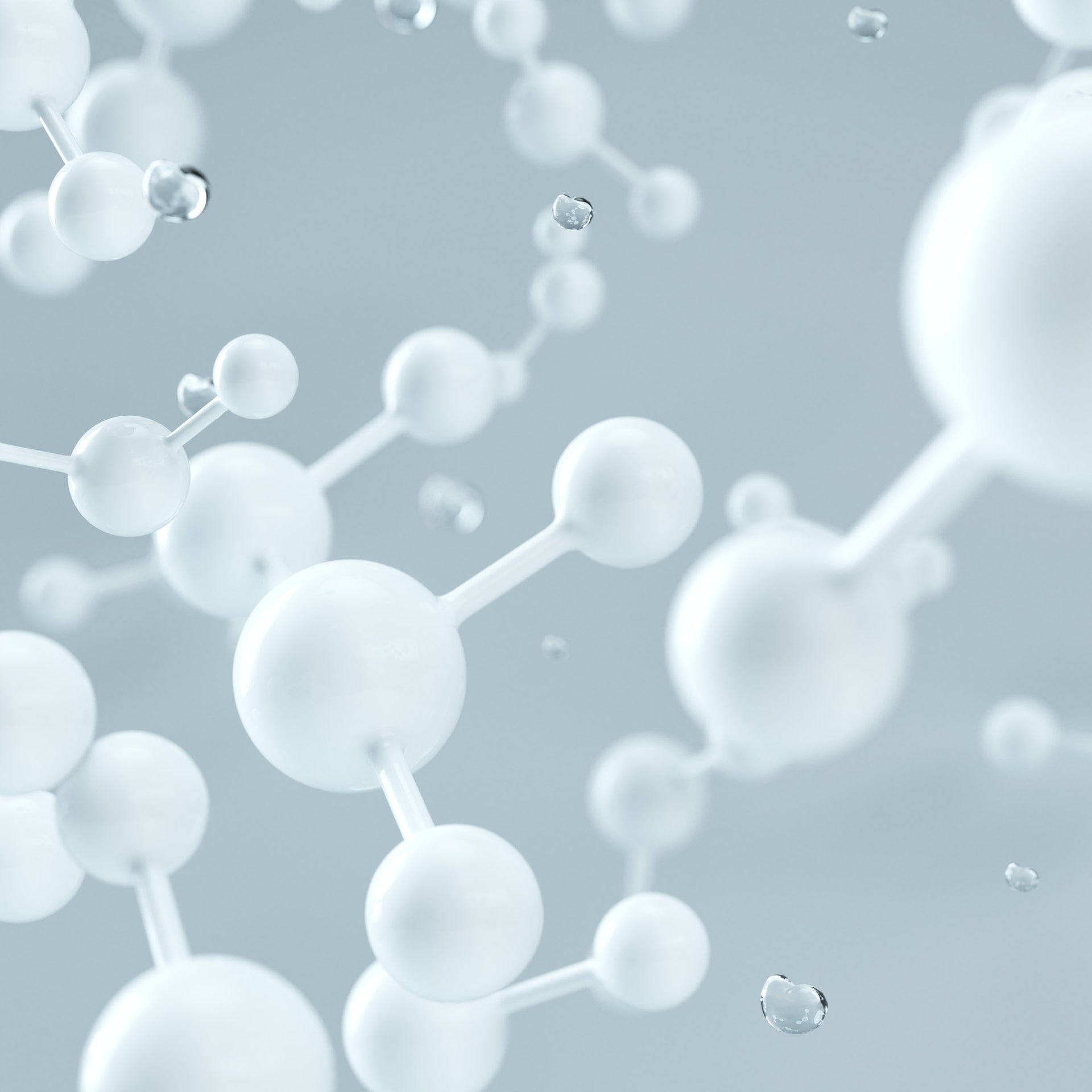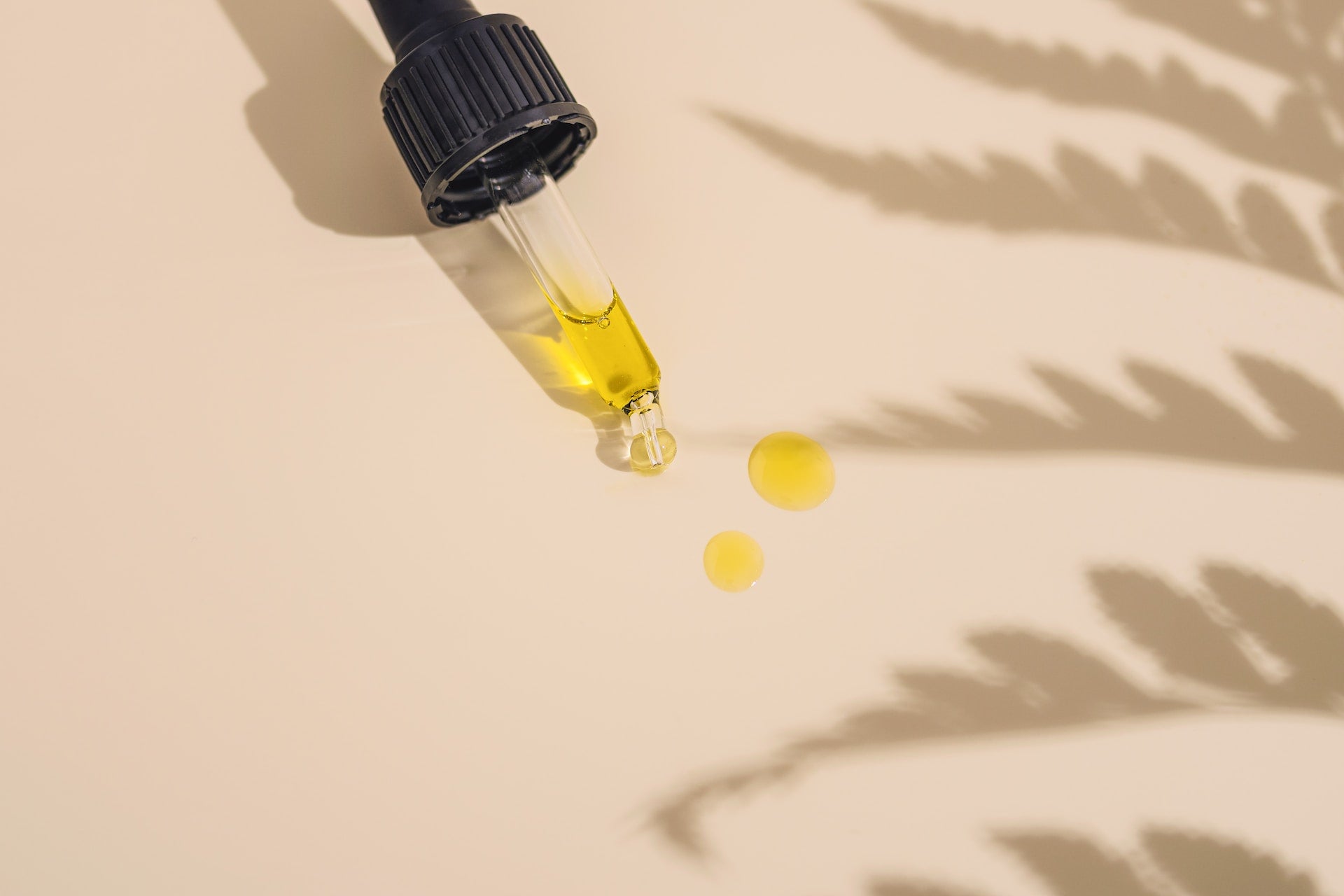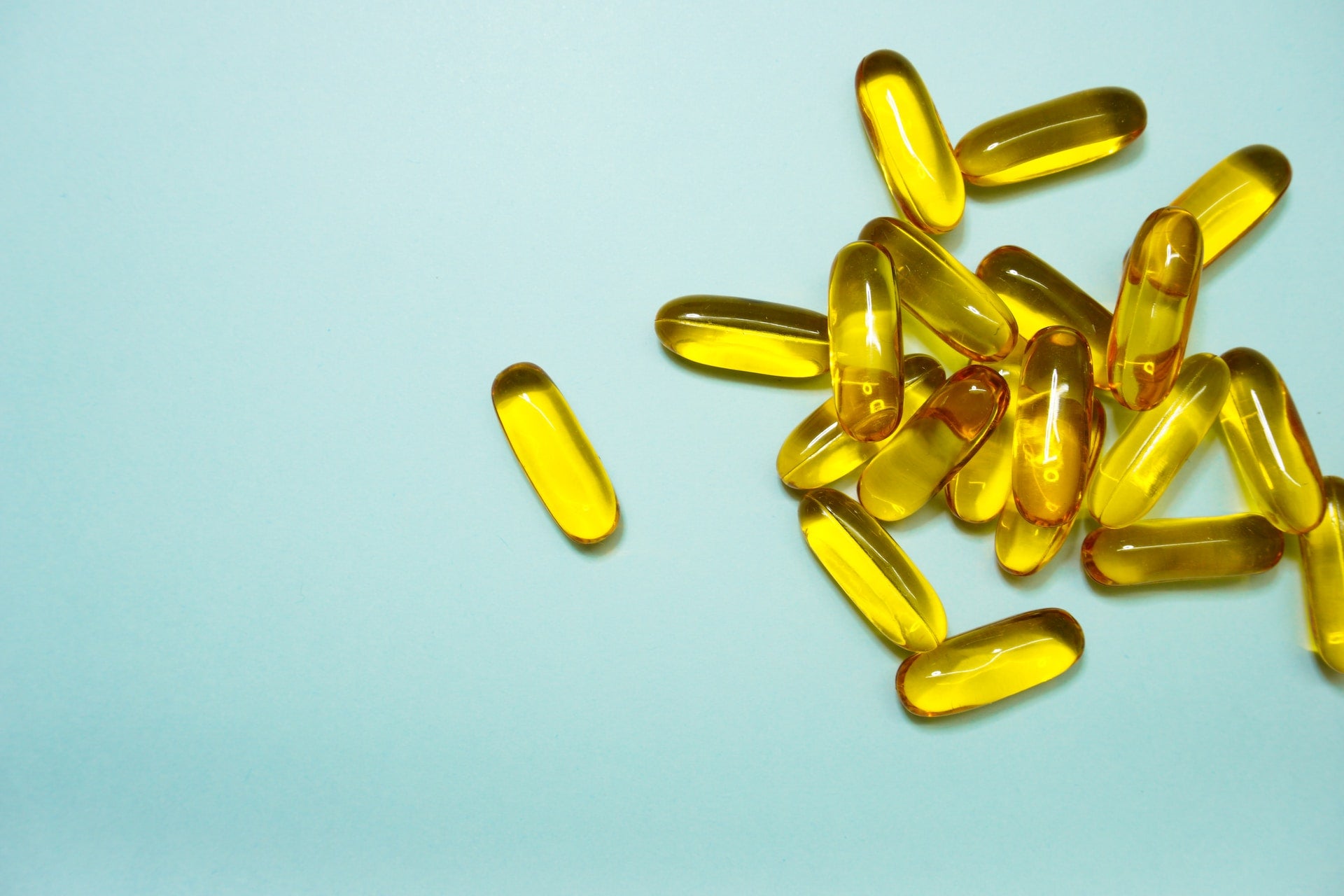Factors that Affect Thyroid Health & How to Restore It
Thyroid issues are by no means rare these days, and in the past couple of years, my understanding of this topic has really evolved (building on great influence from Dr. Ray Peat). Let me explain. A well-functioning thyroid is a cornerstone marker of optimal health. Discovering the connection between the liver, the metabolism, and the thyroid will help one understand how to improve their thyroid status. What does the thyroid do? The thyroid is like the master headquarters of our body's overall health. It affects energy production, hormone production, neurotransmitters, body temperature, mood, immune health, and more. Active thyroid hormone T3 is used in every cell in the body to create energy. There’s no quick fix for thyroid issues, but it is possible to restore thyroid health through consistent lifestyle changes that benefit the liver and metabolism. This is why it's important to support both metabolic and liver health, which in turn benefit the thyroid function and overall healing. This is largely in parallel to the Energy Restoration Process (a free guide on our website) and has some main goals: prioritize electrolyte intake via food/hydration/supplement optimize nutritional intake with quality foods and round off with supplementation as needed execute health-promoting behaviors such as circadian regulation, movement, grounding, sunlight, fresh air, etc eliminate and avoid toxins as much as practically possible (processed junk foods, pufa oils, toxic soaps cosmetics, and home products, etc) The additional specific liver-supporting tools and detoxification methods mentioned below will also help all of the above work much better, as the liver is responsible for the majority of T3 production in the body. Lack of T3 = high TSH, a.k.a the body sending a signal to request more T3. A functioning liver is crucial or else this cycle will continue forever. Ways to Support Liver Health (our main detoxifier and metabolic orchestrator) limit toxin exposure (drugs, household chemicals, alcohol, environmental, pesticides, seed oils) castor oil packs consuming adequate protein daily taking TUDCA MAX to support bile flow liver flushing lymphatic drainage massage mindful eating processing anger/resentment beef liver, dark leafy greens dandelion root tea, ginger tea B vitamins, vitamin E, trace minerals coffee enemas Ways to Support Metabolic Health (how well we generate and process energy in the body) regulating blood sugar with consistent eating, every 2-4hrs, with both carbohydrates and protein. sufficient electrolyte intake and balance exercise / daily movement supporting circadian rhythm (blocking blue light at night, getting sunlight in the morning/red light therapy) post-meal walks quality and consistent sleep The thyroid also requires these important nutrients daily: Iodine: shellfish, dairy, seaweed Tyrosine: eggs, cheese Zinc: red meat, oysters Selenium: red meat, shellfish, eggs B2/B3/B6: eggs, dairy, meat C: fruit D: sun, eggs, dairy, mushrooms E: Antidote vitamin E A: eggs, dairy fat, liver Supplements for thyroid, metabolic and/or liver health: Antidote Vitamin E supports the liver/metabolism in the following ways: Helps prevent the oxidation of PUFA Decreases excess estrogen (inhibits the enzyme aromatase) Improves cell waste detoxification Helps cells utilize oxygen Mitigate macular degeneration Improves insulin resistance Learn more about Antidote here. TUDCA MAX supports the liver/metabolism in the following ways: Improved bile flow Improved fat digestion Increased fat-soluble vitamin absorption Supports gut health Aids in toxin elimination via bile May assist in dissolving gallstones May improve liver and muscle insulin sensitivity May reduce elevated liver enzyme markers May lower cholesterol May reduce cholestasis May improve conditions of liver cirrhosis, fatty liver, and hepatitis Learn more about TUDCA and how it works here. Methylene Blue supports metabolic health in the following ways: Broad spectrum anti-inflammatory Antioxidant capable of lowering oxidative stress and markers of aging Repairs cellular mitochondrial energy production Improves cellular ability to use oxygen (oxidative phosphorylation) Shown to improve depression, anxiety, psychosis, schizophrenia Promotes autophagy (the cell's garbage removal system) Reduces harmful Nitric Oxide Learn more about MB and how it works here. Energi+ B-Complex B vitamins are crucial to metabolic health (creating energy), and also important for liver function as the liver uses B vitamins to metabolize toxins, generate energy from food, and for other important processes like methylation. For an in-depth breakdown of each B vitamin in our complex, and their benefits checkout the product page. TyroPhen: L-Tyrosine & L-Phenylalanine are both amino acids that are precursors to Dopamine, and the Thyroid hormone. Dopamine synthesis Thyroid hormone production support Improved motivation Improved focus Attention deficit assistance Regulation of reward-seeking behavior May assist with addiction alleviation Aids melanin production Adrenal support Prolactin lowering Serotonin lowering Learn more about TyroPhen here. Toro: L-Taurine The All-Star Amino Acid, does many things in our bodies, but in regards to liver health, it is crucial for bile formation and flow. Taurine is conjugated with bile acids to form bile salts, which are released by the gallbladder to both help us digest the fat we consume, and assimilate the fat-soluble vitamins in that fat. If bile accumulates and is not formed into the salts that can be used, this can congest the liver and gallbladder with 'gallstones' or formations of bile/cholesterol/other proteins.Taurine is also highly concentrated in the most metabolically active tissue of the body, and the highest quantity of any free amino acid. In a healthy body, taurine is abundant. Learn more about Toro here.
The Right Forms of B Vitamins (and why it matters)
Most generic B Complexes out there are simply not effective, and can even work against the body if the wrong forms of the Bs are used, and ratios are off. This is why I set out to create the best B Complex on Earth... I spent tons of time researching each form and the interactions in the body before I went into production. Energi+ contains the most bioactive forms of the B Vitamins, which provides higher bioavailability, and better utilization in the cells &. energy systems.Some B complexes might have a couple of these optimal forms, but none contain them all, until now. Most large corporation-run supplement companies just don't have the wealth of knowledge that comes from the bioenergetic community behind the formulation of their products.So, let's look at these forms deeper and get an understanding of what they do and what makes them the best choice. B1: Benfotiamine instead of thiamine HCl Benfotiamine is a fat-soluble form of thiamine, so it stays in the body longer before being excreted and thus has a much higher bioavailable capacity than standard thiamine HCl. Benfotiamine delivers a more bioactive array of B1 benefits, such as improving glucose utilization, pyruvate dehydrogenase activation, neuroprotection, and anti-cancer effects. B1 is also a crucial component for recovering from alcohol use and has been shown to be liver-protective. Benfotiamine has been shown to reduce the inflammatory effects of endotoxin & PUFAs. B3: Niacinamide instead of niacin Niacinamide greatly increases our ability to utilize carbohydrates as energy, lowers free fatty acids in the blood, and increases cellular NAD+ levels which makes it an incredible tool, especially for someone switching to a diet with an emphasis on burning carbs efficiently as fuel. It does not induce the inflammatory response that niacin commonly does. Note: increased niacinamide intake also requires an increased demand for the methyl donors - because niacinamide must be methylated it can therefore use up high amounts of the methyl donors: choline, methionine, b9 folate, and B12. This is why Energi+ contains the most biologically active forms of both B9 and B12. B9: L5-methyl folate instead of folic acid Most supplemental folates are in the form of Folic Acid, which has to be converted by the body into methyl folate, many people struggle with that process due to stress, current biological situation, and so forth, and then unmetabolized Folic Acid in the body can cause problems. L5-MTHF is the most biologically active form of Folate and is found in nature and whole foods. L-5-MTHF can support methylation, in tandem with B12, which will not only maximize the efficiency of supplemental Niacinamide but also help many other processes such as DNA synthesis, hormone conversion, and homocysteine regulation. B12: Adenosylcobalamin instead of cyano/methylcobalamin Adenosylcobalamin is the form of B12 that is used directly in the mitochondria to create energy, in the Citric Acid Cycle. Most B complexes contain methylcobalamin, similar to L-5-MTHF, the body must convert methylcobalamin to adenosylcobalamin so that it can be used to create energy in the cell. This makes adenosylcobalamin the best choice when it comes to taking B12 supplements, as it will be easily absorbed by the body and assist in the energy production processes as best as possible. B6: Pyridoxal-5-phosphate (P5P) instead of pyridoxine P5P is the active form of B6 that our body uses in the methylation cycle, neurotransmitter synthesis, and glycogen use. Most B complexes contain B6 in the form of pyridoxine which is biologically inactive, as it must be converted to the active form (P5P) for the body to use it, and most of it is not converted successfully. Taking pyridoxine may cause peripheral neuropathy in some people. The Importance of B Vitamins The B Vitamins are involved in so many physiological functions, but they are heavily involved and priceless in the context of energy metabolism. When we consume carbohydrates, proteins, or fats, the body must convert these dietary inputs into acetyl-CoA, which is what kicks off the energy production process in the mitochondria. In the mitochondria, The Citric Acid Cycle (TCA) (aka Kreb's Cycle), and the Electron Transport Chain (ETC) are responsible for the majority of our energy (ATP) production. The important thing to note here is: There are many many steps involved in these energy processes, and each step of the way is facilitated by an enzyme. Enzymes require micronutrients for their function, like Magnesium, Copper, Zinc, Vitamin C, and of course, the B vitamins. Many factors can deplete our B Vitamins quickly, such as alcohol consumption, medications, gut/digestive issues, and an unbalanced diet. To learn more about Energi+ and dive deeper into what each component does, check out the product page.
What is TUDCA and what does it do?
TUDCA is a bile salt. Tauroursodeoxycholic acid (TUDCA) is a water-soluble, conjugated bile salt. It is produced in the liver using cholesterol, deoxycholate (which is made in the intestine by bacteria and cholic acid), and the amino acid Taurine. What are bile salts? Bile salts are one of the components that make up bile. Upon the ingestion of fats, hormones signal your gallbladder to release bile, which aids in digestion by breaking down fats, assisting in the absorption of fat-soluble vitamins, and eliminating waste. TUDCA clears out the sludge While bile acids are known as mild surfactants, amino-acid-conjugated bile salts like TUDCA are considered strong surfactants. This is in relation to its action as a detergent for stuck and sludgy bile, to emulsify and help us digest fats, and to help us increase bile flow from the gallbladder into the intestine. Bile Flow is key The therapeutic value of TUDCA really centers around this ability to improve bile flow. When we eliminate stuck, old, sludgy bile, and improve the flow of bile, the entirety of the metabolic function in the body is improved. Fat-soluble vitamins are absorbed better, glucose from food intake is converted more efficiently into energy, digestion is improved, and ingested and stored toxins are eliminated more readily via bile. TUDCA and Thyroid Since 80% of thyroid hormone T3 is converted from T4 in the liver, thyroid function is accelerated with the ingestion of TUDCA and thus the improvement of liver function. This becomes a positive feedback loop because improved thyroid function will in turn improve metabolism, digestion, and overall energetic function. TUDCA in today’s context All toxins (toxic food, drugs, alcohol, polluted air/water, etc) that we come into contact with must be processed by our liver, and much of them are packaged into the bile by the liver which is then to be excreted via the stool. But, when we are faced with such an onslaught of toxins constantly, the liver can become overburdened. When this happens, the bile flow can slow down, and both bile and cholesterol will accumulate, become sludgy, and form stones that cause congestion in the liver ducts and gallbladder, leading to familiar health issues such as high cholesterol, low thyroid, elevated liver enzymes, low metabolic function, fatty liver, and others. Learn more on the TUDCA MAX product page.
Study Spotlight: Taurine deficiency as a driver of aging
Lately, there have been some very groundbreaking studies done on Taurine with some very promising results. Taurine is an integral amino acid for the structure, function, and metabolism of our body. It plays many important roles and offers numerous benefits that can significantly impact our overall health and well-being, from hormone health, cardiovascular benefits, blood pressure and electrolyte regulation, metabolic improvements, and more. Together, let's look into this recent study published in Science demonstrated the remarkable effects of taurine supplementation on aging and lifespan in animal studies. Study: Taurine deficiency as a driver of aging Summary: Studying various animals, Singh et al. found that the amount of the semi-essential amino acid taurine in circulation decreased with age. Supplementation with taurine slowed key markers of aging such as increased DNA damage, telomerase deficiency, impaired mitochondrial function, and cellular senescence. Loss of taurine in humans was associated with aging-related diseases, and concentrations of taurine and its metabolites increased in response to exercise. Taurine supplementation improved life & health span in mice and health span in monkeys. Increase in life & health span in mice & monkeys The study found that by supplementing with taurine, the animals showed signs of reversed aging and increased lifespan and health span. “Blood concentration of taurine declines with age in mice, monkeys, and humans. To investigate whether this decline contributes to aging, we orally fed taurine or a control solution once daily to middle-aged wild-type female and male C57Bl/6J mice until the end of life. Taurine-fed mice of both sexes survived longer than the control mice. The median life span of taurine-treated mice increased by 10 to 12%, and life expectancy at 28 months increased by about 18 to 25%. A meaningful antiaging therapy should not only improve life span but also health span, the period of healthy living. We, therefore, investigated the health of taurine-fed middle-aged mice and found an improved functioning of bone, muscle, pancreas, brain, fat, gut, and immune system, indicating an overall increase in health span. We observed similar effects in monkeys.” Why Taurine improves health & life span? Taurine supplementation has been shown to combat age-related issues and conditions such as inflammation and diabetes. As we age, our taurine levels naturally decrease, which can contribute to the development of these common age-related problems. By replenishing taurine levels through supplementation, we can potentially mitigate the effects of aging and improve our overall health. “Investigations into the mechanisms through which taurine supplementation improved the health span and life span revealed that taurine positively affected several hallmarks of aging. Taurine reduced cellular senescence, protected against telomerase deficiency, suppressed mitochondrial dysfunction, decreased DNA damage, and attenuated inflammation. An association analysis of metabolite clinical risk factors in humans showed that lower taurine, hypotaurine, and N-acetyltaurine concentrations were associated with adverse health, such as increased abdominal obesity, hypertension, inflammation, and prevalence of type 2 diabetes. Moreover, we found that a bout of exercise increased the concentrations of taurine metabolites in blood, which might partially underlie the antiaging effects of exercise.” In Short... Taurine is an integral amino acid for the structure, function, and metabolism of our body. Decreased Taurine levels with increased age is associated with many common age-related issues and conditions such as inflammation, diabetes and more. Therefore, taurine supplementation may increase lifespan and healthspan, and decrease the common degradations associated with aging. From reversing aging and increasing lifespan to improving cardiovascular health, brain function, athletic performance, and blood sugar regulation, taurine offers a multitude of benefits that can positively impact our overall well-being.That is why it's important to consume taurine-rich foods and consider supplementation into your daily routine to not only support the everyday function of your body, but combat aging and aging related health issues in the future. To learn more about our taurine product Toro, click here.
Supplements for Fall and Winter
As we move toward fall and winter (in the northern hemisphere), it can be helpful to tailor your supplementation strategy to support our bodies with the change of season. Cooler weather and decreased sunlight time outside can impact our health and make us more prone to illness, low energy, and decreased mood. The change of seasons may also stimulate a detoxification reaction in the body, which presents as an acute illness, and assisting our body's detox mechanisms can be extra valuable. These tools can help you stay feeling your best: 1. Methylene Blue (? MB) MB is what we call the ‘Swiss army knife’, as it can benefit a huge array of issues or health concerns, one of them being cold/flu prevention or recovery. When you feel sickness coming on, a couple of drops of MB can help the body stimulate the energy production it needs to heal and prevent worsening symptoms. If you are already sick, taking it daily may speed up recovery time substantially.Some more MB resources: MB: Swiss Army Knife - articleDosing info post - (not medical advice) 2. Theanine (Thea) If you’re back to work or school, or simply looking to maintain or boost your alertness and focus, without the caffeine crash or anxiety as we shift into the new season, supplementing the amino acid Theanine may be for you. L-Theanine is typically known for its benefits on focus, relaxation, memory, and calm alertness, and can also reduce stress and have anti-depressive, mood-elevating effects. 3. Chaga Mushroom (Wild Chaga) Chaga mushroom contains very potent anti-oxidants and polyphenols that can prevent colds or illnesses, or speed up recovery when sick by reducing inflammation, regulating cytokine production, and fighting off free radicals. The high concentration of beneficial compounds assists the body’s detoxification process, to help you bounce back or maintain your health during the colder months. 4. Red and NIR Light (Relax) As fall and winter approach, red light therapy becomes much greater in value as many of us have less available sunlight, and typically spend most of our time indoors, and likely looking at screens. On those long indoor days especially, it is really helpful to have a high-intensity red light supplement that you can use to nourish your body with the healing frequencies and potent bright light which helps support our circadian rhythm, balance out blue light, and promote energy and a better mood. As always, ensuring you're getting enough sleep and eating nourishing foods is imperative to wellness, especially as our bodies move into winter mode. Eating more hearty, warming foods and drinks, getting your morning sunlight, and keeping your body moving can go a long way.
Red Light Therapy Guide & Tips
We get a lot of questions about red light therapy, and our Relax device so I thought I'd put together a little guide to cover the basics and benefits of Red Light therapy, and how and when to use our device. As fall and winter approach, red light therapy becomes much greater in value as many of us have less available sunlight, and typically spend most of our time indoors, and likely looking at screens. Screen time is unavoidable for most of us, but comes along with the downsides of being drowned in blue light all day, not only in our eyes but on our skin. This can have negative impacts on our hormone production, eye health, mood, and mitochondrial energy production - which can then domino effect into issues with digestion, detoxification, and ability to exit a stressed state. On those long indoor days especially, it is really helpful to have a high-intensity red light supplement that you can use to nourish your body with the healing frequencies and potent bright light which helps our bodies function in so many ways. Red Light vs. Near Infrared Light Red Light uses bright visible red wavelengths (610-660nm) that benefit the skin and systems within the skin tissue, such as circulation, healing scars/burns, and collagen production. Near Infrared Light has longer, invisible wavelengths (810-850nm) that penetrate below the skin, to cells deep in your body, including muscles, joints, and bones Red Light Benefits Red Light mainly benefits the skin, but the bright light also supports the circadian rhythm and can benefit mood and energy as well. accelerating wound healing reducing the appearance of fine lines, wrinkles, and scars promoting collagen and elastin production in the skin reducing inflammation and increasing circulation promoting healing of active acne stimulating hair follicles for growth NIR Light Benefits Because NIR penetrates deeper into the body, it can benefit our muscles, bones, and tissues on a cellular level to soothe pain and promote healing and regeneration. muscle healing and recovery joint, tendon, and bone repair reducing chronic pain & inflammation dental healing/pain reduction counteracts the harmful effects of excessive blue light exposure eye health and damage protection stimulates mitochondria to create more energy How to use Relax For maximum benefits, we recommend using both the Red and NIR light settings at once, however, you can use one at a time if preferred. Recommended treatment time: 15-20 minutes per treatment area at a time. Repeat multiple times per day as needed. You can apply the light directly onto the skin for the most penetration, or as close as you can get it to the treatment area. It is recommended to keep your eyes shut if applying red light to your eyes/face, otherwise, you can keep them open during treatment. If you are very sensitive to bright light eye protection may be helpful, but not necessary for everyone. When to use? You can use the device at any time throughout the day, however, it is important to consider the circadian rhythm and work with it, not against it. Using the Red & NIR lights first thing in the morning can help wake up the body, reset the circadian rhythm, and provide energy. At night/before bed, it is best to only use NIR to avoid the bright Red light from keeping you up by reducing melatonin. During the fall & winter months, when there is less sunlight available, it’s even more beneficial and supportive to health to get Red & NIR light exposure daily Why choose Relax? There are many red light therapy devices on the market, however, they vary a lot in quality. I wanted to offer a device that took into account flicker rate, EMF exposure, and the best quality components to maximize the benefits of use and offer shipping directly from Canada and the US for less shipping and customs fees. These are the issues I came across when I was looking to purchase a device years ago. There are many other companies offering red light therapy devices, and several of them are also great. At the least, I would recommend staying away from devices found on Amazon. For the price, I think Relax is one of the most affordable devices at its size and specifications. Flicker-Free Many red light therapy devices on the market use low-quality components that result in flickering, which can’t be seen by the naked eye. This constant flicker can have a negative effect on the nervous system, and take away from the healing and relaxation factors of the Red and NIR wavelengths. We use top-quality bulbs and LED drivers that are completely flicker-free to maximize effectiveness and relaxation. Low-EMF Another issue with other red light devices is that they emit EMFs through the light panel itself, which can reach the body when using the device closely, making it less ideal to use directly in contact with the skin. Our device has an external power source on the cord rather than directly in the device, allowing for close contact with the light without EMF exposure. To learn more about Relax and view more product specs, visit the product page here.
What are Amino Acids & Why Supplement Them?
I have always felt that health should be built from the ground up, which is why LifeBlud mainly focuses on providing the building block tools with which our body uses for the flow of energy, to combat stress, and to protect itself from environmental toxins.Amino Acids are a massive component of this biological system. The interplay between energy and structure is the most important thing to note here. As Dr. Ray Peat has said "energy and structure are interdependent, on every level". Amino acids complex with water, electrolytes, and fats to make up the entire crystalline-water-structure that we are. When we have the building blocks to make up our structure, it allows us to generate energy. When we have the flow of energy, it further improves our structure. The two are inseparable. What are amino acids? Amino acids are the building blocks of life. They are organic compounds that combine to form proteins, which are vital for the structure, function, and regulation of the body's tissues and organs as well as the precursor to many enzymes and neurotransmitters needed for optimal health. Protein = a collection of amino acids. Amino acids = different 'building blocks' that facilitate MANY important functions and processes in the body. When we eat protein, it is broken down into different amino acids (depending on the food) and then the amino acids are used for a variety of important roles in the body that we will soon cover in detail. There are 20 types of amino acids, which are separated into two main groups:Essential amino essential - cannot be made by the body, must be eaten. Non-essential amino acids - can be made by the body IF the body is functioning well, AND if it has the 'essential' amino acids which they are made from. However, I want to stress that ALL of them are 'essential' for your body in different amounts, and just because one of them CAN be made by your body does not mean it is being made, as these processes can be disrupted by many stressors and imbalances, or deficiencies of the essential amino acids, which get converted into the non-essential ones. What roles do they play in the body? Amino acids have a wide range of roles in the body, and their functions are diverse and complex. Here are some of the key roles they play: 1. Building and repairing tissues Amino acids are essential for the growth, maintenance, and repair of tissues in the body. They help in the formation of new cells and the repair of damaged tissues, ensuring that our body stays strong and healthy. 2. Enzyme production Enzymes are proteins that catalyze chemical reactions in the body. Amino acids are required for the production of enzymes, which are involved in various metabolic processes, such as digestion, energy production, and detoxification. 3. Hormone regulation Amino acids are involved in the synthesis and regulation of hormones, which act as chemical messengers in the body. Hormones play a crucial role in maintaining homeostasis, regulating growth and development, and controlling various physiological processes. 4. Muscle growth and repair Amino acids, particularly the branched-chain amino acids (BCAAs), are crucial for muscle growth and repair. They help in the synthesis of muscle proteins and prevent muscle breakdown, promoting muscle recovery and enhancing athletic performance. 5. Energy production Amino acids can be converted into glucose through a process called gluconeogenesis. This glucose can then be used as a source of energy by the body, especially during times of fasting or intense physical activity. 6. Brain function and mood regulation Amino acids, such as phenylalanine and tyrosine, are precursors to neurotransmitters, which are chemicals that transmit signals in the brain. These neurotransmitters play a crucial role in regulating mood, cognition, and overall brain function. 7. Nutrient absorption and digestion Bile salts are synthesized from amino acids, which help us to digest and assimilate fats and fat-soluble vitamins from the foods that we eat. Why Supplement Amino Acids? You may wonder why you would worry about taking non-essential amino acids, if the body can make them. Here's some things to consider: - your body may not be making them adequately or correctly - you may not be consuming the essential amino acids used to make them in the first place, or not enough of them to do so consistently - supplementation has been proven to provide therapeutic responses as shown in many studies (see product pages for Toro, Thea, and TyroPhen for various studies in the references tab)As for supplementing essential amino acids, sometimes it's difficult to eat as protein-rich as we intend to, and it can be difficult to ensure which amino acids will be in each type of protein and in what amounts, as well as eating a balanced amino acid profile from a wide variety of proteins. If you want to take more control, and be sure you're getting what you need without going full carnivore mode, supplementation is key.In short, amino acids are the unsung heroes of our body. By understanding the roles they play and ensuring an adequate intake, we can reach new levels of health from the ground up.
Why take vitamin E?
Vitamin E is often overlooked but boasts tremendous benefits in the body for not only healing and restoring imbalances but also protecting us from and preventing future damage from stressors such as oxidization, that we face on a daily basis. Here are some notable benefits of taking Vitamin E: • Lowers excess estrogen: Vitamin E helps regulate estrogen levels in the body, preventing hormonal imbalances. • Decreases oxidative stress: By neutralizing free radicals, Vitamin E reduces oxidative stress and protects cells from damage. • Prevents lipid peroxidation: Vitamin E prevents the oxidation of fats in the body. • Decreases and reverses markers of biological aging: Vitamin E helps combat age-related skin issues like age spots, wrinkles, and skin discolouration. • Protects from cell damage: The antioxidant properties of Vitamin E protect cells from damage caused by environmental factors and toxins. • Helps cells utilize oxygen and create energy more efficiently: Vitamin E improves cellular respiration, enhancing energy production. • Protects from damage caused by high PUFA foods: Vitamin E counteracts the harmful effects of polyunsaturated fatty acids (PUFAs) found in fried foods and seed oils. • Improves insulin resistance: Vitamin E plays a role in improving insulin sensitivity. • Supports fertility: Vitamin E is essential for reproductive health and can improve fertility in both men and women. Excess Estrogen Vitamin E is one of our primary, natural tools to reduce excess estrogen. We live in an unbalanced world, and currently, we get exposed to a lot of substances that increase estrogen in the body, such as: • polyunsaturated fatty acids (PUFA) • industrial air pollution & exhaust • plastic exposure • chemical hand/body/hair soaps, detergents & house cleaning products • chemicals in unfiltered water • agricultural herbicides/pesticides/fertilizers in our food supply and even some animal products if they are fed moldy grain.Because we get exposed to many of these on a regular basis, we need a tool to tip the scales in the other direction. That tool is Vitamin E and its function as an aromatase inhibitor. Utilizing Oxygen Vitamin E is a major antioxidant that helps the cells use oxygen, by protecting against the damaging effects and byproducts of oxidized polyunsaturated fats, iron, and other oxidative stress-inducing compounds. This interaction can assist us in: • reducing skin aging • more stable energy levels • lowering stress • a greater ability to use carbohydrates efficiently as energy • improvement of macular degeneration • healing burns or wounds / reducing scarring These improvements are due to vitamin E's capability of rebalancing hormones/reducing excess estrogen as an aromatase inhibitor and protecting our cells from free radical damage. Why not just eat whole-food sources? The context. In nature, most food sources that are high in PUFA also contain Vitamin E as an antioxidative protective factor. Therefore one could say that we could just get our Vitamin E from those foods. However, at our time in history, the food supply is inundated with vegetable and seed oils which are essentially highly concentrated PUFA isolates, and totally void of vitamin E. Many of us have been consuming these oils in large quantities our entire lives as they are in tons of food products such as commercial breads, cakes, muffins, cereal, chips, in the vast majority of restaurants, you name it. This creates a context where we could seriously use a Vitamin E isolate to help tip the scales back and reverse the Vitamin E deficiency caused by high PUFA intake. The Antidote(s) Most Vitamin E products are in a base of Soybean, or Sunflower oil (PUFA), which means you're taking in more of the poison along with the antidote. We offer two versions of our Vitamin E product. Both products are: • Naturally sourced Vitamin E mixed tocopherols. • Molecular-distilled extraction method. Meaning the tocopherols are extracted using a distillation, and are completely free of any chemicals/solvents/and extreme heat. • In a non-PUFA oil base. • No filler, no unnecessary (chemical) ingredient Antidote is encapsulated in an organic olive oil base, while Antidote v2 is a liquid form, with a MCT oil base. You can learn more about each on the product pages.
Vitamin K: A General Guide
Vitamin K is a group of fat-soluble vitamins that play a role in blood coagulation, bone metabolism, calcium regulation, and many more processes in the body. It's one of the more complex vitamins, and is often misunderstood or overlooked. All the different forms can be overwhelming at first so let's break it down... K1 vs. K2 K1 (phylloquinone)• the primary role is blood coagulation• less bioactive - only circulates body for a few hours then excreted• only found in plant foods - green vegetables like collards, spinach, and kale. K2 (menaquinone) • There are two main types of K2: MK-4 & MK-7• Their roles are mainly bone metabolism, & cardiovascular health but assist in overall general health.• more bioactive (much longer life span than K1: 72hr. average) • found in animal products & some fermented foods Now that you understand the differences of K1 and K2, let's look deeper into the subtypes of K2. MK-4 vs. MK-7 MK-4• plays a crucial role in pulling calcium out of the soft tissues, and arteries, and directing it back into bone & teeth.• shorter life span in the body (~6-12hrs.)• found in pastured eggs, grass-fed milk, butter, & grass-fed meats MK-7• the main 'role' is that it can be converted by the body to MK-4 when needed • longer life span in the body (~72hrs) • found in fermented foods like natto, sauerkraut, hard & soft cheeses & yogurt/kefir MK-4 and MK-7 are cooperative in the sense that MK-4 produces more biological action, but circulates for less time, whereas MK-7 circulates longer, and can be converted back into MK-4. MK-7 Isomers: Trans vs. Cis Cis-trans isomerism refers to the process that occurs when functional groups in a molecule are rotated or bent into a different configuration. MK-7 can be trans or cis-isomer. Having the right 'shape' is very important for vitamin K2 to fit and interact with the correct molecules. MK-7 trans-isomers are the perfect fit, whereas cis-isomers have a bend in their carbon chain, and may slow down the activation of an enzyme or stop it completely. This makes trans-isomer MK-7 more readily used by our body, and more bioactive than cis-isomer MK-7. Notable K2 Benefits • protects arteries from calcification and plaque • moves calcium into bones • contributes to healthy blood pressure, and cardiovascular function • builds tooth strength and prevents decay • regulates the nervous system & supports brain health • facilitates cellular energy production Why are we Deficient? • K2 MK-4 & 7 deficiency has risen drastically since the switch to industrial farming practices has taken over - the switch from grass to grain-fed livestock means less K1 intake that can be converted to K2 by the animal and thus available in the animal products we eat.• The rise in vegan, low-fat, or other restrictive diets that do not include any MK-4-containing animal foods• The richest sources of K2 are not commonly consumed by most people orconsumed consistently enough (or were not consumed during upbringing) • Conversion of K vitamins can be slowed by poor gut function or other metabolic dysfunctions in the body I think it's important to fully understand the roles of vitamins before jumping into supplementation, which I why I put a lot of research into formulating my Vitamin K products, Regulate and MK-Seven. To learn more about them, check out the product pages.
The History of Omega 3 Supplements
From paints & varnish to livestock feed to 'essential fatty acid' supplements & 'cholesterol-free, heart-healthy cooking oil'... most PUFA oils started out being used in industrial formats and slowly trickled into our food supply as 'healthy' alternatives to animal-based fats. Once you understand the history and the function of these oils, the bigger picture gets a lot more clear.
Tips for Pro-Metabolic Weight Gain
Fat gain on "pro-metabolic"is not uncommon, and I can see why. The 'pro-metabolic' community is not authoritarian and therefore has a lot less boundaries then more restrictive diets like vegan/keto/carnivore etc.. It emphasizes nutrient dense, high calorie animal foods that are rich in saturated fats and protein, and also the consumption of plenty of carbohydrate.This can go sideways for a few main reasons:1. Too much fat: staying in 25-35% of overall calorie intake is ideal. Make sure you are aware of your fat intake. Measure portions and calculate macros in cronometer if you must.1a. Randle cycle: Consuming high fat and high carbohydrate at the same time will block the cell's use of sugar for fuel and use the fat instead, while storing the sugar as fat.2. Large, infrequent meals: Especially when starting out, the liver won't be storing glycogen efficiently and needs to be fed more frequently, with smaller amounts of carbohydrate and protein.3. Too much starch in a compromised system: Low metabolism and low digestion can go hand in hand. If you aren't digesting starches properly, they will ferment in the gut and cause issues like endotoxin, which drives weight gain and inflammation. Favour simple sugars like fruit, honey, syrup, cane sugar.4. Too much too fast: Switching overnight from restrictive eating and/or a low metabolic state is not the best course of action. Increase meals and carb intake slowly and gradually to give your body time to adjust.5. Under-eating: Both under and over eating can create a disordered or stagnant metabolism, which is why it helps to keep track of what you're eating, at least in the beginning until you get a hang of it.This is a lifestyle that divorces the ideas of quick fixes, short term gains, and instant results in favour of long-term, sustainable benefits and balanced physiology. Be patient and make small adjustments over time. Don't expect a drastic result in 1-2 months.Some helpful tools: Magnesium: to assist energy production, hormone synthesis Vitamin E: to oppose estrogen Sunlight: Hormone/circadian optimization Cholesterol Containing Foods: Hormone Precursor
My Favourite Heavy Metal Chelators
The following are supplements/tools I recommend utilizing if you are trying to detox from heavy metals. Heavy metals accumulate in our bodies from various sources and contribute to all different types of disease. 1. MagnesiumThrough mineral-metal antagonism, which is the concept that minerals and the undesired metals can end up in the same binding sites. This can happen unfavourably in either mineral deficiency, or oversupply of the toxic metals.If magnesium is the cofactor for over 40 percent of our enzymes, then that means there are a lot of binding sites that can be competed for or taken over during magnesium deficiency. This is why magnesium is my #1 choice hands down for metal chelation.Magnesium can reduce blood and organ levels of aluminum, mercury, lead, cadmium, arsenic, beryllium, and nickel.2. Shilajit Fulvic acid converts metallic elements into forms that can either be excreted, or used by the body. Just like its function in the presense of high quality, microbe rich soil, where it converts unuseable minerals into bioavailable food for the plants, it can do the same for us. Shilajit has the benefit of fulvic and humic acid, but also that it is an intelligent, whole-food mineral complex with all of the minerals and trace minerals, including ones we don't hear about often like rubidium, molybdenum.3. Beef Liver, shellfish, whole-food vitamin C (fruit) This comes down first to the understanding of the copper-iron metabolism which is quite possibly much more important than hyper-focusing on the chelation of trace metals, considering the bombardment of iron in our food supply since birth. Adequate copper and Vitamin A are absolutely crucial for balancing the iron from iron fortification, and for overall thyroid and metabolic health which will optimize all of these processes.Selenium, zinc, and iodine in whole food form present mainly in shellfish, but also organ meats are also highly beneficial for the mineral-metal antagonism mentioned in #1.4. Raw Milk Lactoferrin is an enyzme in raw milk that has a high binding affinity to ferric iron, which is the oxidized dangerous form of iron (rust).Sweating in a sauna would be a great behavioural addition. I cycle living silica from bamboo on and off. I also like MSM as the sulphur compounds help facilitate detox.
Vitamin E: Anti-Prolactin, Anti-Estrogen, Progesterone-Sparing
"Vitamin E, like progesterone and aspirin, acts within the cellular regulatory systems, to prevent inflammation and inappropriate excitation. Since uncontrolled excitation causes destructive oxidations, these substances prevent those forms of oxidation." - Ray Peat.Vitamin E has long been known as a 'pro-fertility' nutrient, that is able to prevent the toxic effects of excess estrogen within and outside of pregnancy, circulatory disorders, blood clotting, lack of oxygen availability to the tissues, and more.Researchers have called it 'progesterone-sparing' because its antiestrogenic effects seem to be very similar to the beneficial effects of progesterone.Comparatively, PUFA themselves have many of the similar effects of estrogen. Such as decreasing oxygen supply to the tissues, suppressing thyroid, inducing cell damage, inflammation, and fibrosis.So it really could be due to Vitamin E's protective effects against the polyunsaturated fats, that cause a beneficial hormonal cascade such as anti-estrogen, anti-prolactin, and progesterone sparing.Vitamin E strongly protects against the toxic effects of PUFA, and some research actually suggests that it can help convert PUFA into saturated fatty acids in the colon. This could be a very important factor in the 'detox' process of PUFA. (P.E. Hughes and S.B. Tove, 1982.).This study also shows after vitamin E supplementation prolactin levels were greatly decreased: https://pubmed.ncbi.nlm.nih.gov/1490755/.
Magnesium Bicarbonate vs. Other Magnesium Supplements
When it comes to Magnesium supplementation, Magnesium Bicarbonate is without a doubt the best. There used to be magnesium bicarbonate in natural water sources like springs, from the runoff of the mineral rock Brucite (from which Mg Hydroxide is derived) in reaction with environmental CO2. But due to industrial pollution, and recycled water systems, we don't have these bicarbonate salts in our water supply anymore.The good news is that we can re-create this natural process ourselves at home, to re-mineralize our water and get the best, most absorbable form of Magnesium.Commercial forms of Magnesium have extremely low absorption rates, and come along with negative side effects, like Mag Citrate interfering with copper absorption, which will throw Iron levels out of whack, or Mag Oxide pills containing all sorts of filler and excipients. Not a good idea, and not a smart use of money.LifeBlud Balance is a mixture of Magnesium Hydroxide and Sodium Bicarbonate. The Sodium Bicarbonate increases cellular retention of Magnesium and therefore has an important role in the product. One bag is at minimum a three month supply. Making magnesium bicarbonate can be a bit more time-consuming and requires more effort, and for some it is just not feasible. That's why I created our magnesium capsule, MAG+ . You can read why it's better than other magnesium capsules on the product page. Both excellent Magnesium products, each with their own set of strengths, but, at the end of the day, consuming bicarbonate will always be my #1 recommendation.It's great to have a bottle of MAG+ handy in addition to Balance in case you don't have time to make bicarbonate, or you want the added benefits of Taurine and Glycine, arguable two of the most therapeutic amino acids out there.
B1 & Alcohol: The Heart-Brain-Thiamine-Alcohol Relationship
I created our B-Complex supplement, Energi+ originally with alcohol recovery in mind, as it is something quite relevant to my own life. I also studied all of the B complexes out there, and always found flaws in them. Most often it was the wrong forms of the B vitamins, like Thiamin HCl instead of a more bioavailable version such as Benfotiamine, or Niacin instead of Niacinamide, Folic Acid instead of L-5-Methylfolate, or a less active version of B12 instead of adenosylcobalamin - the active form used in the Kreb's Cycle. Below are a couple of studies I've come across that demonstrate a connection to B vitamin deficiency and alcohol-related problems.The relationship between alcohol and Thiamine has long been established.For a long time, thiamine has been used in hospital setting to treat Wernicke-Korsakoff Syndrome which is alcohol induced nervous system damage.Newer research, applied to our knowledge of physiology, provides us with new ideas why B1 might be so important to replenish after alcohol use. 1. Vitamin B1 deficiency a key factor in the development of alcohol-related dementia. - Hypothesis describes the role of iron deposits in the brain as the cause of dementia in alcoholics"...the cognitive deterioration is caused by iron deposits in the brain but the administration of vitamin B1 could protect the brain from these deposits. These deposits can also be detected in specific regions of the brain (including the basal ganglia) in people who drink a lot of alcohol. The hypothesis advanced by the study authors now also offers an explanation as to why iron deposits are so prevalent in this patient group: high alcohol consumption results in elevated iron levels in the blood and also to vitamin B1 (thiamine) deficiency, which, among other things, is important for maintaining the blood-brain barrier. If these two situations coincide, more iron will be deposited inside the brain, ultimately leading to oxidative tissue damage." 2. Thiamine mediated reversal of left ventricular dysfunction in patients with alcoholic cardiomyopathy - This study shows that relatively low dose B1 can partially reverse damage done to the heart muscle resulting from chronic alcohol use. “…They were treated with 3 days of intravenous (IV) therapy with thiamine (200mg daily) followed by oral supplementation. The researchers found that the average mount of alcohol consumed was 60-110g / day over a mean duration of 14 years. LVEF was 30% at baseline, which improved by 45%-53% along with reduction in LV dimensions over at 3 and 6 months respectively.” 3. Benfotiamine and Cognitive Decline in Alzheimer's Disease: Results of a Randomized Placebo-Controlled Phase II: a Clinical Trial - Not alcohol related - but Alzheimer's can be deemed diabetes of the brain. Meaning the brain cant use its primary energy so the brain can't utilize it's primary source of fuel (glucose) and gets stuck in a damaging and inefficient metabolic process including fatty acid oxidation. Benfotiamine significantly improved the glucose metabolism, which in turn reduced the cognitive decline in the patients. This could be a very important piece of the puzzle."Among those who took benfotiamine, CDR scores were significantly reduced (by 77%), relative to placebo, again indicating a slower rate of functional decline. Select measures of glucose metabolism improved significantly in the benfotiamine group".
Magnesium & Heavy Metal Chelation
Heavy metals are ubiquitous in our environment and it is inevitable that we will end up assimilating them into our bodies. Where can heavy metals come from? - Unfiltered water- Food (pesticides, herbicides, fungicides, all of our food is tap-water irrigated)- Cosmetics (industrial chemicals in makeup, perfumes, lipsticks, creams, etc)- Soaps - Cookware- Household cleaning products- Deodorant- Textiles- Plastics- Paints/caulking/other home building materials- Exhaust and other air pollution What are the most common heavy metals?- Aluminum- Cadmium- Arsenic- Lead- Mercury- Tin - Barium- Antimony- Beryllium Understanding that its near impossible to avoid coming into contact with these metals from our food supply, the air we breathe, the water we drink, and the things we put on our skin - we should come to accept that we need to stay actively chelating these metals. This brings an entirely new element of importance to the consistent and adequate use of Magnesium. Why? One major important thing to note about heavy metals and metal chelation, is the concept of mineral-metal antagonism.We know that even essential minerals can compete for the same enzymes to be absorbed in the body. Examples such as: excess Zinc (Zn) inhibiting Copper (Cu) absorption, or excess Phosphorous (P) inhibiting Calcium (Ca) absorption. This means that certain heavy metals can compete for the same binding sites in the body (tissues, cells, etc) as essential mineral and trace minerals.When this happens in the favour of heavy metals, it creates dysfunction, symptoms, or disease conditions. When it happens in the favour of the proper minerals, the heavy metals are displaced, and liberated into the blood where they can be carried to the liver, the kidneys, and excreted.Many people like to focus on 'binders', but without displacing the actual metals with the right minerals that should be in our cells and tissues, the binding is less effective.Magnesium is protective against aluminum, mercury, lead, cadmium, arsenic beryllium and nickel, and is shown to reduce blood, bone, and organ levels of these metals. (Bulat et al, 2012).Therefore, the first step in any chelation protocol or process should be to remineralize the body with all of the most essential electrolytes and trace minerals. Creating a healthy cell with the proper mineral intake is the key to maintaining its structure, function, and ability to reject heavy metals.References & Significant Quotes:1. POLLUTION BY METALS: IS THERE A RELATIONSHIP IN GLYCEMIC CONTROL?https://sci-hub.st/10.1016/j.etap.2016.06.023"Environmental pollution is an important problem in big cities. Recently, air pollution has been associated as a risk factor for Diabetes Mellitus and obesity, mainly because their ability to cause oxidative stress and inflammation that leads to lipogenesis, adipose tissue inflammation and insulin resistance (Rao et al, 2015; Janghorbani et al, 2014). Air pollution is an important source of metals attached to particulate matter. Metals are pollutants with historical relevance because of the effects reported on population’s health." "Metals are known to affect mitochondrial mechanisms and increase the production of free radicals leading to oxidative stress and inflammation, both of these conditions, could play a role in metabolic disorders as diabetes or obesity."2. Intake of Magnesium and Toxicity of Lead: An Experimental Modelhttps://sci-hub.st/10.1080/00039896.1979.10667391"In these experiments, the urinary excretion of Pb was significantly higher (P < .01) in Mg-fed rats compared to the rats fed only Pb. This indicates that either more Pb is absorbed in Mg-fed rats, thereby causing increases in excretion, or the amount of Pb absorbed may be less or the same, but the amount retained is less in the rats fed Mg. The second possibility appears more likely in view of the fact that blood lead content was significantly lower (P < .05 and P < .01) in Mg-fed rats 15 and 30 days after initiation of Pb feeding" "At 62 days, the brain, heart, spleen, and lung contained significantly higher amount of Pb in Mg-fed rats, whereas femur and humerus contained significantly lower amounts of Pb. These results clearly suggest that the elevated blood levels specifically related to the mobilization of Pb from bone and that this mobilization also caused transcient increases in Pb content of certain soft tissues"3. Decreased thiamine and magnesium levels in the potentiation of the neurotoxicity of lead in occupational lead exposurehttps://link.springer.com/article/10.1007%2FBF02685917"This study has shown that relatively low BPb levels can enhance Pb absorption and also potentiate Pb neurotoxicity in the presence of decreased serum thiamine and Mg levels."4. Inhibition by Magnesium and Calcium Acetates of Lead Subacetate- and Nickel Acetate-induced Lung Tumors in Strain A Micehttps://cancerres.aacrjournals.org/content/44/4/1520.long"The lead and nickel salts, administered alone, each produced a significant increase in the observed number of lung adenomas per mouse. When administered with any of the doses of calcium acetate or magnesium acetate tested, neither lead subacetate nor nickel acetate showed any significant tumorigenic activity. Calcium acetate alone (total dose,11 mmol/kg of body weight) appeared to yield a significant rise in lung adenomas observed. The results indicate an antagonism between magnesium and calcium and the tumorigenic metals nickel and lead." 5. Contribution to interaction between magnesium and toxic metals: the effect of prolonged cadmium intoxication on magnesium metabolism in rabbitshttps://pubmed.ncbi.nlm.nih.gov/9884986/"Magnesium content was determined in blood, urine, soft tissues and bones by the AAS method. Under the experimental conditions, Cd lead to statistically significant decrease of blood Mg (p < 0.001 after day 16) which was associated with increased Mg elimination via urine (p < 0.01)."6. Effect of Magnesium Supplementation on the Distribution Patterns of Zinc, Copper, and Magnesium in Rabbits Exposed to Prolonged Cadmium Intoxication"Magnesium reduced Cd concentration and lipid peroxidation and had even protective effect against carcinogenicity and teratogenicity of Cd in experimental animals as reviewed by Matovic et al.""Besides mechanisms of Cd toxicity which include induction of oxidative stress and apoptosis, aberrant gene expression, altered DNA structure, and inhibition of ATP production in mitochondria [1–4], Cd toxicity can be also explained by disturbed homeostasis of bioelements [5–7]. The increasing environmental cadmium exposure, on one hand, and the wide-spread bioelements deficiency in the world mainly due to nutritional factors but also as a result of cadmium exposure, on the other hand, clearly indicate the relevance of Cd bioelements interactions""Our recent studies have 2 The Scientific World Journal shown that supplementation with Mg significantly reduces Cd concentration in the blood, kidney, spleen, and bone of rabbits exposed to prolonged Cd intoxication [15] and has beneficial effect on Cd levels in kidney, lungs, testis, and spleen, as well as kidney glutathione (GSH) concentration in mice exposed to subacute intoxication [20–22]""Cadmium intoxication induced significant decrease of blood Mg levels from the 22nd day till the end of experiment (Figure 1(c)). Magnesium administration managed to prevent Cd-induced changes in blood Mg concentrations that were significantly higher"

















